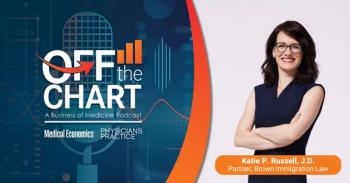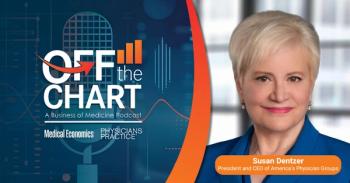
Physicians, Patients, and Price Opacity
Skyrocketing insurance deductibles, Medicare, and Medicaid price manipulation shifting costs to private insurers and opaque prices are robbing your patients.
You have a commercially insured patient with chronic hip pain. X-rays show bone on bone. You refer your surgical candidate to a trusted orthopedic hip specialist on faculty at the local teaching hospital who concurs and schedules a total joint replacement.
Another patient well cared for and in good hands. All in a day's work. Yes, sir.
All except that you just needlessly cost the patient and their family a few thousand extra dollars out of pocket, increased their exposure to a host of endemic bugs, and put your patient at risk because the sicker patients who actually belong there take priority.
Maybe that local community hospital where elective orthopedics procedures costa half to a third of the teaching hospital may have been a better choice.
Then again, cut yourself some slack. How can you make quality and value judgments when federal regulations and hospital policies stifle price transparency as if it were a state secret? Your patient is even less equipped, and asking what a procedure will cost in a pre-op consult is treated akin to asking for, well, use your imagination.
What's worse, according to
How can anyone not believe that we need some elements of price transparency and price competition from providers of high-cost services, or any services for that matter? The Feds don't really care because they set the reimbursement rates for government payersthatare in turn subsidized bycommercial insurance.
Hospitals blame the feds for setting rates too low, cost shift to commercial carriers, and charge the uninsured outrageous fees.The working public and their employers get it in the pocketbook, and how. What's worse, every medical device istaxes an added 2.6 percent underObamacare's medical device tax. And, hidden in the cost of every product or service you purchase is the hidden tax placed by commercial insurers that goes to cover governmentshortfall for every charity care, Medicaid, and Medicare patient.
Now here is the really scary part. Nobody can even tell you how much this is costing us. In a country whose success and prosperity is founded in the bedrock of a free market system that competes on price and value, one-sixth of our economy is dominated by self-serving federal central pricing that even Google can't find easily. It has becomesuch an abject mess over the past five administrations that the whole system has become cruelly absurd and contrary to our founding principles.
It is disturbing that the government can distort private health insurance by simply squeezing prices at will, causing more cost shifting,and further exacerbating the impact on working Americans.
But here's the kicker. Our own government is playing a dangerous game. If they drive private insurers out, then who is there to cost shift to? If there are no commercial plans, then the government will have to fund the true cost of healthcare and the whole system will be squashed under the immense weight of its regulatory petard.
This is why the solution will not come from insurance reform, but from delivery-system and reimbursement reform that can actually lower the costs of medical care and open up the healthcare economy to greater price transparency and competition.
Because cost shifting to individuals has now reached a critical mass at $6,350 for individuals and $12,700 for families for what turns out to be minimal coverage, we are approaching that breaking point.
If price transparency is not in the cards for the general public, the last line, and only line of defense is with empowered and accountable physicians guarding patients' fiscal health as carefully as the physical.
Cost is not about price, but value, and that should factor at the top of the list.
It deserves fair consideration on the next referral or referred patient, and every one after that.
Newsletter
Optimize your practice with the Physicians Practice newsletter, offering management pearls, leadership tips, and business strategies tailored for practice administrators and physicians of any specialty.




